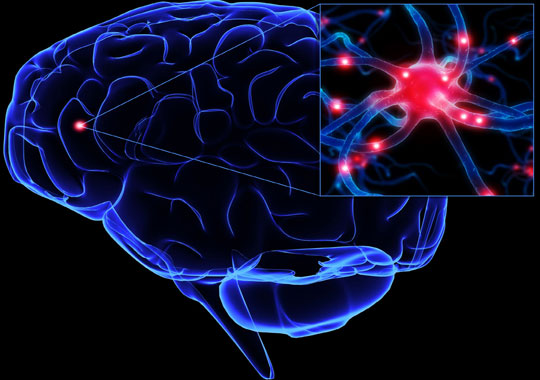Detecting a cluster of proteins leads to 130 brain diseases
According to a study published in the journal Nature Neuroscience, scientists have discovered a bunch of proteins that play a crucial role in the development of more than 130 brain diseases.
The study shows a surprising link between these diseases, including Alzheimer's and Parkinson's , and the development of human behavior.

Image for illustrative purposes. (Internet source)
The human brain is the maze of millions of specialized neurons connected to billions of synapses.
The proteins in synapses combine to form a molecular set called the posterior posterior scale ( RSD ). It is the RSD that breaks the function of adaptation and causing diseases and changing behavior.
The lead researcher, Seth Grant of the British Wellcome Trust Sanger Institute, said they have separated PSD from synapses of brain surgery patients.
" We found more than 130 brain diseases related to PSD, more than originally anticipated, " Grant said . PSD is at the center of a series of diseases affecting millions of people. '
In addition to the diseases associated with normal neuronal degenerative disorders, PSD also involves both epilepsy and autism.
So far, the combination of 1,461 proteins has formed PSDs encoding specialized genes.
According to the research team, the findings open new avenues for treating brain diseases as well as helping doctors diagnose and classify brain diseases better.
" The structural preservation of these proteins shows that behaviors controlled by PSD and their diseases have not changed much over the past million years," Grant said.
- Discovered two proteins that cause brain cancer
- Alzheimer's disease and Parkinson's are not contagious
- Detecting star clusters 30 million times brighter than the Sun.
- Detecting bactericidal proteins that can replace antibiotics
- Detecting new proteins that block HIV virus
- Use microelectrodes to bring drugs into the brain
- Eliminate the reproductive ability of pests and diseases
- Women talk a lot about brain
- Insomnia leads to loss of human brain cells
- Discover a cluster of 19 giant sinkholes around the underground river
- The galaxy cluster is 500 billion billion times heavier than the Sun.
- Automatic refrigerator door lock when earthquake
 Green tea cleans teeth better than mouthwash?
Green tea cleans teeth better than mouthwash? Death kiss: This is why you should not let anyone kiss your baby's lips
Death kiss: This is why you should not let anyone kiss your baby's lips What is salmonellosis?
What is salmonellosis? Caution should be exercised when using aloe vera through eating and drinking
Caution should be exercised when using aloe vera through eating and drinking DNA test method can detect many genetic diseases at the same time
DNA test method can detect many genetic diseases at the same time  8 human health challenges coming decades
8 human health challenges coming decades  Herbs have the ability to cure over 50 diseases
Herbs have the ability to cure over 50 diseases  Network neurons diagnosed 216 rare genetic diseases
Network neurons diagnosed 216 rare genetic diseases  Misconceptions when using condoms
Misconceptions when using condoms  Detected 2,200-year-old mummy with obesity caused by eating a lot of sugar
Detected 2,200-year-old mummy with obesity caused by eating a lot of sugar 